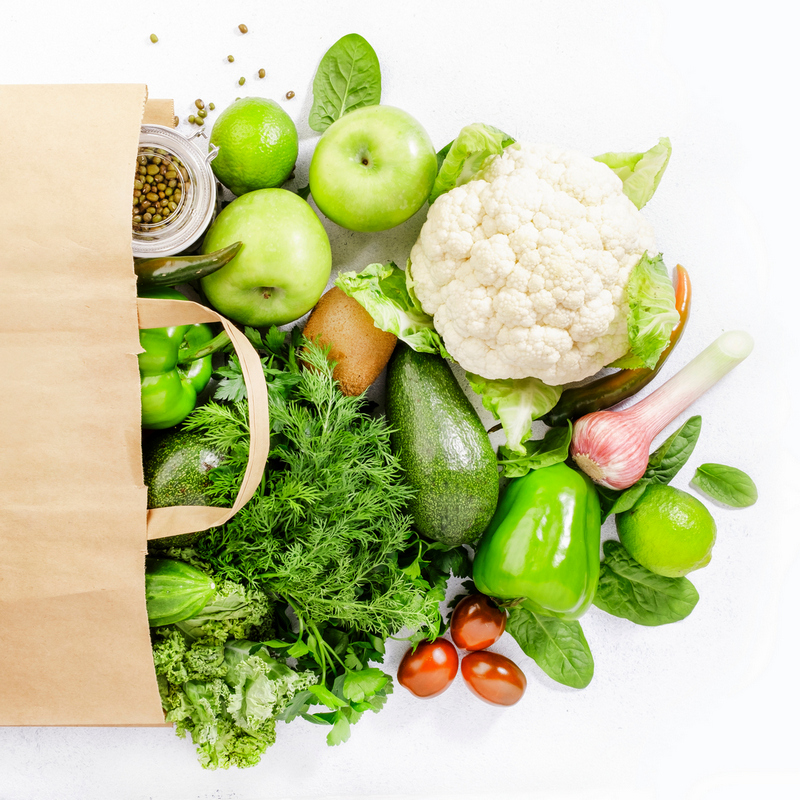Sponsored by the Weight Loss & Longevity Institute (WALI) at FYZICAL PBC.
Alana M. Sims, MS, RD/LDN
Vitamins and minerals are components of food the body needs in smaller amounts compared with carbohydrates, proteins, and fats. As a Dietitian/Nutritionist, I have heard just about every myth regarding the function of vitamins and minerals. Many people believe that vitamins and minerals give the body energy. If only it was that easy! The body obtains energy from the large nutrition components just mentioned carbohydrates, proteins, and fats. Calories (viewed by some as an arch nemesis) are energy. It’s that simple. Think of the body as a car. Cars cannot run without gasoline, or an electric source for the environmentally friendly folks. Calories are the gasoline or electric energy the body needs. It can’t survive without them!
METABOLISM
The body is constantly burning or using calories in a process called metabolism. Total calorie or energy needs vary person-to-person. Energy requirements depend on factors such as age, physical activity level, and disease process. Calories aren’t solely present to facilitate weight gain; body systems use Calories to produce energy in the form of a cool chemical called ATP (adenine triphosphate).
The metabolic energy production is what keeps the gears of the body functioning in basic ways (heart beating, moving, thinking, breathing).
Co-enzymes
Vitamins and minerals act as co-enzymes for various chemical reactions that occur in the body. Co-enzymes add gasoline to the fire, so to speak, working with enzymes to catalyst reactions. Reactions may or may not take place without the presence of these chemicals. Therefore, vitamins and minerals are paramount. They hold the power to make necessary chemical reactions in the body occur leading to energy production. Selenium and zinc are two micronutrients essential to a healthy immune system. Both nutrients have specific roles in developing and maintaining an effective immune system. We will focus on selenium first.
Why Selenium?
Selenium functions by eliciting antioxidant properties and interacting in metabolic pathways. Within the immune system, selenium acts in partnership with vitamin E to prevent the destruction of cell membranes due to oxidative damage. Selenium is a trace element, meaning the body does not require large amounts in order to function properly. Unfortunately, large amounts of selenium are not found in many foods. Because of that, selenium deficiency will decrease anywhere from 500 million to 1 billion people around the world. A selenium deficiency leads to intensified oxidative damage occurring within our cells. Low selenium levels are associated with increased risk for chronic diseases including cancer, infections and cardiovascular disease. Additionally, research shows that low selenium levels can cause harmless viruses to worsen into destructive pathogens.
Where Do I Find Selenium?
Although plant foods obtain selenium through the soil, the selenium content for soil varies widely across different geographical regions. The Southeast region of the United States contains some of the lowest amounts of selenium in the soil which converts to low selenium content in foods derived from the ground. Since selenium content in soil determines its concentration in plant foods, consuming plants foods as a sole source for selenium intake is not highly feasible. Luckily, a few foods are good sources of selenium.
Up first, the star of the show: Brazil Nuts.
The American Recommended Dietary Allowance (RDA) suggests an intake of 55mcg of selenium per day for adults. However, some studies report a daily intake of 100mcg is closer to meeting the dietary requirements to attenuate health and disease reduction. One ounce of Brazil nuts (about 6-8 nuts) meets 989% of the total daily needs defined by the RDA. Yes, you read that correctly. 989%. ONE OUNCE. Remarkable! Eating about 4 Brazil nuts per month is enough to far exceed selenium needs. Other foods that are good sources of selenium include enriched pasta, brown rice, oatmeal, cereals, and whole grain bread. These food sources do not have nearly as such selenium as Brazil nuts, but consuming ~4-5 servings of these foods each day can meet or exceed the RDA.
How About a Supplement?
Research on selenium supplementation has shown promising effects. Supplementation of 100mcg of selenium per day exhibited immune modulating effects in adults. However, supplements are not regulated. Not even the government takes a look at these. Companies that produce each supplement are responsible for verifying the safety, potency, and efficacy of the products. It’s like you did your taxes and then sent them to yourself instead of the IRS to be reviewed for accuracy. However, third-party companies, such as United States Pharmacopeia (USP), will review the chemical makeup of supplements to verify the contents. When possible, a food-first approach should be taken to meet nutritional needs.
Healthy BITEE Immunity Challenge – Focus on the Mineral Seleniu
Starting Today
- One Brazil Nut a week
- 4-5 Servings of intact whole grains a day: Brown oats, barley, whole grain breads or pasta. Intact whole grains are the best!
Log it!
Add this to your log of food, fluid, and exercise to help identify areas for improvement in your daily habits. You will use your log to compare current habits with future Immunity Challenges identified in each Nutrition BITEE.
SEE HEALTHY BITEE IMMUNITY CHALLENGE #1
Copyright© 2020, The Healthy Bitee – FYZICAL Therapy & Balance Centers Palm Beach County

